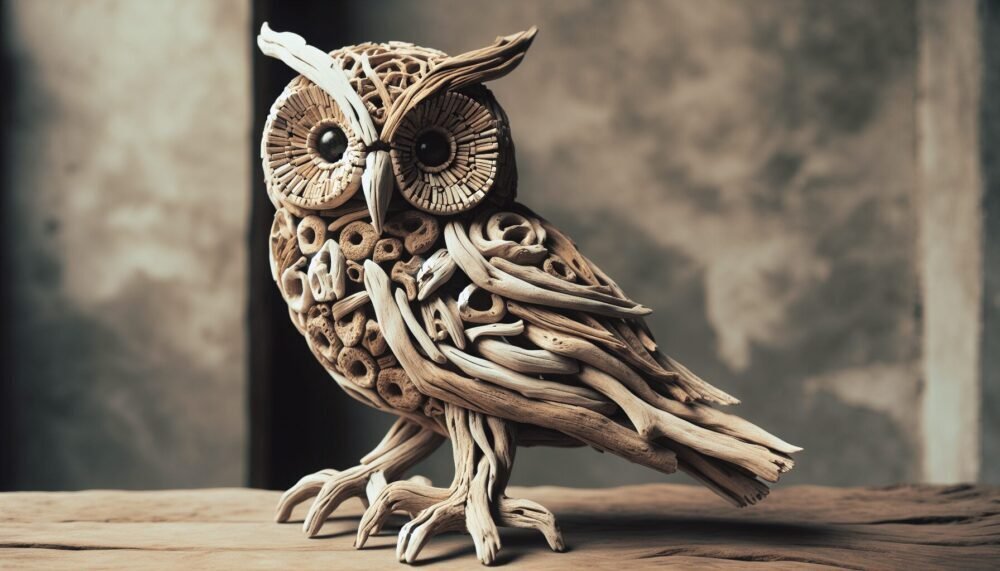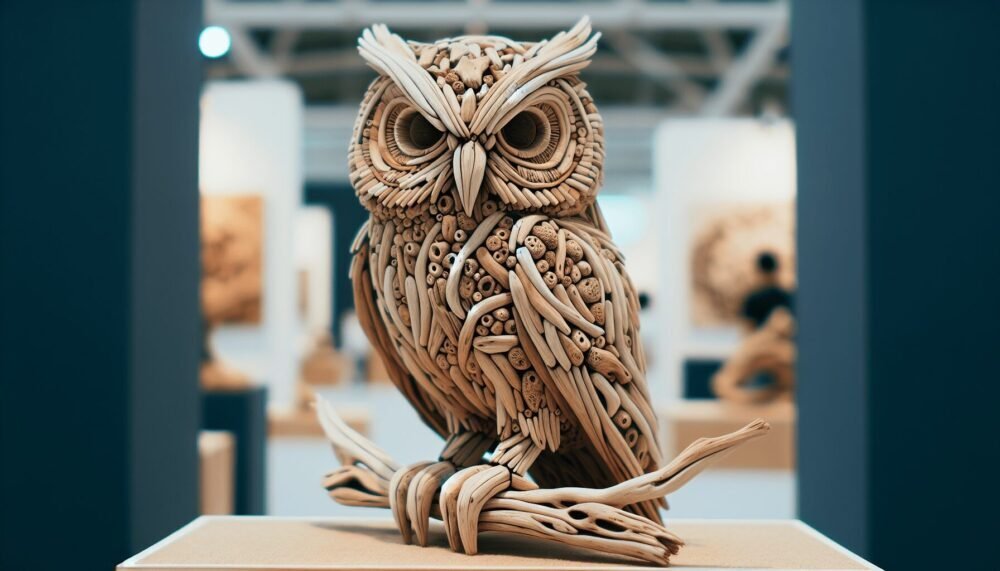Have you ever wandered along a beach and stumbled upon a piece of driftwood that looks remarkably like a creature from the deep sea? If so, you might be fascinated by the concept of the Driftwood Whale.

What is a Driftwood Whale?
A driftwood whale is not a living creature but rather a large piece of driftwood that has naturally formed into the silhouette of a whale. Over time, ocean currents and wave actions shape pieces of wood into various forms, sometimes resulting in uncanny resemblances to animals or other familiar objects.
The Appeal of Driftwood Whales
These naturally sculpted pieces of art captivate the imagination and spark joy in beachcombers and artists alike. The imperfections and unique formations in each driftwood whale make them a delightful find, embodying the raw beauty of nature.
How Driftwood Forms
Driftwood originates from trees along rivers and coastal areas that get washed into the ocean. Over time, the combination of saltwater, sand, and wave action smoothens the wood, creating its distinct appearance.
Influencing Factors
Several factors influence the formation of driftwood:
| Factor | Description |
|---|---|
| Water Movement | Oceans and rivers provide the motion needed to move and shape the wood. |
| Wood Type | Different types of wood result in varying textures and shapes. |
| Time Duration | The longer the wood is exposed to water and elements, the more polished and unique it becomes. |
The History and Mythology Surrounding Driftwood
Historically, driftwood has held significant cultural and spiritual meanings. Ancient cultures often saw driftwood as gifts from the sea gods or spirits, attributing various mystical properties to these pieces of ocean-worn wood.
Symbolic Meanings
Some common symbolic meanings associated with driftwood include:
- Resilience: The wood has survived and transformed through harsh sea conditions.
- Connection to Nature: It symbolizes a deep bond with the natural environment.
- Transformation: Driftwood represents the journey and transformation it undergoes from forest to ocean to shore.
Uses of Driftwood Whales
Though finding a driftwood whale might seem like a whimsical discovery, these pieces also offer practical and artistic uses.
In Art
Artists around the world use driftwood to create stunning sculptures, including whales. These pieces can serve as centerpieces in home decor or be part of larger installations.
In Landscaping
Driftwood, including driftwood whales, can be used in landscaping to create natural, rustic environments. The unique shapes add unparalleled charm to gardens and outdoor spaces.
Environmental Significance
Driftwood plays a crucial role in coastal and marine ecosystems. It provides habitat and food for a variety of organisms, including insects, birds, and marine life.

Tips for Finding Your Driftwood Whale
If you’re intrigued by the idea of discovering your very own driftwood whale, here are some tips to enhance your search:
- Research Locations: Some beaches are more prone to accumulating driftwood. Look for beaches that are known for heavy wave action and strong currents.
- Best Times: The best time to find driftwood is usually after storms, as waves often wash up new pieces onto the shore.
- Safety First: Always be mindful of tides and weather conditions. Never put yourself in dangerous situations.
Ensuring Sustainability
While collecting driftwood can be a fun activity, it’s essential to do it responsibly. Driftwood is a vital part of the ecosystem, so ensure you are not disturbing habitats or taking more than you need.
DIY Driftwood Whale Projects
Creating your own driftwood whale can be a rewarding project that adds a touch of nature to your home decor.
Materials Needed
Before you start, gather the following materials:
- Assorted Driftwood Pieces
- Wood Glue
- Clear Varnish
- Small Saw or Cutter
- Sandpaper
Step-by-Step Guide
- Collect Driftwood: Choose pieces that best match the body and fins of a whale.
- Shape and Sand: Use a small saw to shape edges if necessary and sand any rough areas.
- Assembly: Use wood glue to join the pieces together, forming the whale’s body and fins.
- Final Touches: Apply a clear varnish to protect your creation and bring out the wood’s natural beauty.
Famous Driftwood Whales
There are several renowned driftwood whale sculptures created by artists that have captured wide attention. These pieces often reside in public spaces or galleries.
Prominent Artists
- Deborah Butterfield: Known for her life-sized sculptures of horses made from driftwood.
- Jeff Uitto: Renowned for his intricate and often large-scale driftwood creations, including whales.
Care and Preservation of Driftwood
If you decide to take your found or created driftwood whale home, proper care and preservation are crucial to maintain its beauty.
Cleaning
Gently scrub the driftwood with a brush to remove sand, dirt, and any organic material. Soak it in a mild bleach solution to kill any bacteria or pests.
Preservation
Once cleaned and dried, seal the driftwood with a clear varnish or wood sealer. This not only enhances its appearance but also helps protect it from moisture and decay.
The Driftwood Whale in Popular Culture
Driftwood whales and other driftwood art have found their way into popular culture, often depicted in media and celebrated in various events.
Literature and Film
You might find references to driftwood art and sculptures in books and films that emphasize nature, adventure, and discovery. These depictions further enrich the allure of driftwood creations.
Community Events
Communities near coastal areas sometimes host driftwood art festivals, where local artists and enthusiasts display their creations. These events foster a sense of community and appreciation for natural art.
The Environmental Impact
Collecting and appreciating driftwood encourages awareness about ocean and coastal ecosystems. It highlights the need for conservation and the interconnectedness of terrestrial and marine environments.
Conservation Efforts
Engaging in driftwood art can inspire participation in broader conservation efforts. Supporting initiatives that protect coastlines and marine life ensures that these natural treasures remain abundant for future generations.
Conclusion: The Beauty of the Driftwood Whale
The driftwood whale embodies the beauty and power of nature’s artistry. Whether discovered along a beach or crafted by an artist’s hands, each piece tells a unique story of its journey from forest to sea and back to shore. By understanding and appreciating these natural sculptures, you not only bring a touch of the ocean into your life but also foster a deeper connection with the natural world. Go out and find your driftwood whale, or create one that speaks to your spirit—either way, you’ll be participating in a timeless dance between nature and imagination.

















